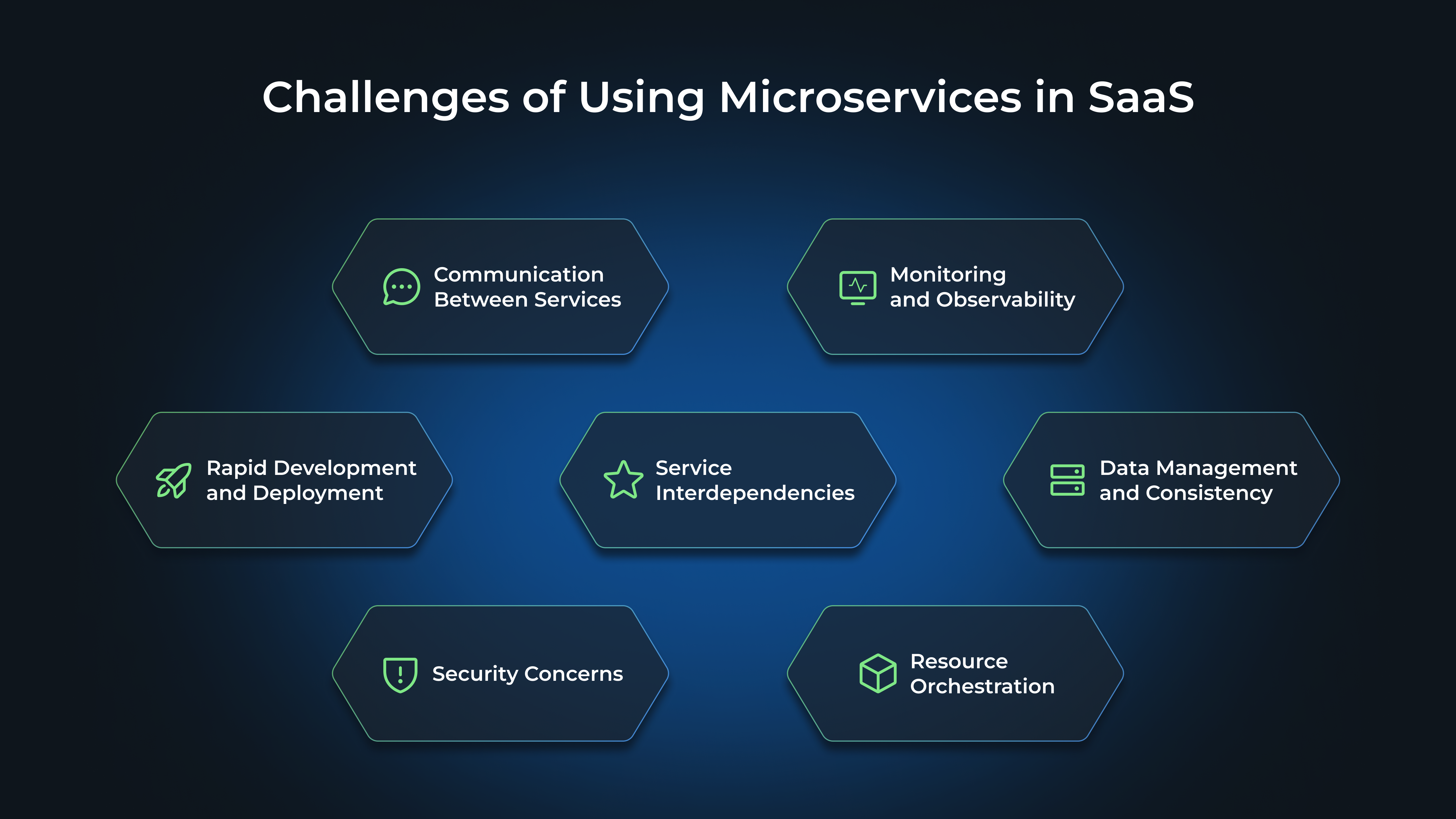We at WeSoftYou understand the importance of adopting best practices in software development, especially when it comes to building Software as a Service (SaaS) solutions using microservices architecture. In this article, we will explore the key principles and essential tools that can help you maximize the benefits of SaaS development with microservices. We will also discuss the intersection of SaaS and microservices, potential challenges, and future trends in this evolving landscape.
Understanding SaaS and Microservices
Before diving into best practices, let’s briefly define SaaS and understand the role of microservices in its development. SaaS refers to the delivery of software applications over the internet, eliminating the need for users to install and maintain the software on their own devices. This model has revolutionized the software industry, providing businesses with a cost-effective and efficient way to access and utilize software.
Microservices, on the other hand, is an architectural style where applications are built as a collection of small, independent services that work together to fulfill complex business functionalities. This approach breaks down monolithic applications into smaller, manageable components, allowing for easier development, deployment, and maintenance.
When it comes to SaaS development, microservices play a crucial role in enabling scalability, flexibility, and modular design. Let’s explore these benefits in more detail.
Defining SaaS: An Overview
SaaS has gained immense popularity due to its many advantages, such as cost-effectiveness, scalability, and ease of use. It allows businesses to access software on a subscription basis, reducing upfront costs and providing flexibility for users to scale their usage as needed.
With SaaS, organizations no longer need to worry about hardware requirements, software updates, or maintenance tasks. The responsibility of managing the software infrastructure lies with the SaaS provider, freeing up valuable resources for businesses to focus on their core competencies.
Furthermore, SaaS applications are typically accessible from any device with an internet connection, providing users with the flexibility to work from anywhere. This accessibility has transformed the way businesses operate, enabling remote work, collaboration, and increased productivity.
The Role of Microservices in SaaS Development
Microservices are the perfect fit for SaaS development because they enable modular design, making it easier to add new features and update existing ones without disrupting the entire system. Each microservice is responsible for a specific business capability, such as user management, billing, or analytics.
By breaking down the application into smaller services, developers can work on different components independently, reducing the risk of introducing bugs or causing downtime. This modular approach also allows for faster development cycles, as teams can work on different services simultaneously.
Another advantage of microservices in SaaS development is improved scalability. Each service can be scaled independently based on demand, ensuring that the application can handle increased traffic and user load. This scalability is crucial for SaaS providers, as they need to accommodate a growing number of users and ensure a seamless experience for all.
Additionally, microservices promote flexibility by allowing different technologies to be used for different services, depending on their specific requirements. This flexibility enables developers to choose the best tools and frameworks for each microservice, optimizing performance and enhancing the overall user experience.
In conclusion, SaaS and microservices go hand in hand, revolutionizing the way software is developed, delivered, and maintained. The combination of SaaS’s accessibility and cost-effectiveness with microservices’ scalability and modular design has paved the way for innovative and efficient software solutions.
The Intersection of SaaS and Microservices
SaaS (Software as a Service) and microservices are closely intertwined, and their combination brings several benefits to software development. From our experience, this combination enables rapid development, deployment, and scalability for SaaS applications.
When it comes to SaaS, the ability to deliver software over the internet has revolutionized the way businesses operate. With the rise of cloud computing, SaaS has become the go-to model for delivering software applications to customers. On the other hand, microservices architecture has gained popularity due to its ability to break down complex applications into smaller, independent services that can be developed, deployed, and scaled independently.
Benefits of Using Microservices in SaaS
There are several benefits of using microservices in SaaS development:
- Improved agility: Microservices allow teams to work independently on different services, enabling faster development cycles and quicker time to market for new features. Each service can be developed and deployed separately, reducing dependencies and bottlenecks.
- Enhanced scalability: Microservices architecture enables scaling individual services based on demand, ensuring optimal performance for different functionalities. This means that as the user base grows, SaaS applications can easily handle increased traffic and workload.
- Higher fault-tolerance: By isolating services, failures are contained within a specific service, minimizing the impact on the overall system. This fault-tolerant nature of microservices ensures that even if one service fails, the rest of the application can continue to function.
- Technology diversity: Microservices provide the flexibility to use different technologies, allowing teams to choose the most suitable tools for specific tasks. This enables developers to leverage the strengths of different programming languages, frameworks, and libraries, resulting in more efficient and effective development.
Challenges and Solutions

While the benefits are undeniable, implementing microservices in SaaS development also comes with challenges. One challenge is managing communication between services, which can become complex as the system grows. However, there are proven solutions like using API gateways and event-driven architectures to facilitate seamless communication. API gateways act as a single entry point for all incoming requests, routing them to the appropriate microservice. Event-driven architectures, on the other hand, enable services to communicate through events, ensuring loose coupling and scalability.
Another challenge is ensuring proper monitoring and observability to quickly identify and address any performance issues. With a distributed architecture like microservices, monitoring becomes crucial to gain insights into the health and performance of individual services. Implementing tools and practices for monitoring, logging, and tracing can help detect bottlenecks, identify errors, and optimize the overall system.
In conclusion, the combination of SaaS and microservices offers numerous benefits for software development. It allows for rapid development, deployment, and scalability, while also providing improved agility, enhanced scalability, higher fault-tolerance, and technology diversity. However, organizations must be aware of the potential challenges and implement appropriate solutions to ensure smooth and efficient operation of their SaaS applications.
Key Principles for SaaS Development with Microservices
Developing SaaS solutions using microservices requires careful consideration of key principles to achieve success. These principles not only enhance the overall performance and functionality of the application but also contribute to better maintainability and scalability.
Emphasizing Modular Design
One of the fundamental principles of SaaS development with microservices is emphasizing modular design. By breaking down the application into smaller, independent services, organizations can achieve better maintainability and scalability. Each microservice should have a single responsibility, making it easier to understand, test, and update.
Modular design allows developers to focus on specific functionalities, ensuring that each microservice is designed to perform a specific task efficiently. This approach also enables teams to work on different services simultaneously, promoting faster development and deployment cycles.
Moreover, modular design enhances the overall flexibility of the application. With independent services, organizations can easily add or remove functionalities without affecting the entire system. This flexibility enables seamless updates and upgrades, ensuring that the application remains up-to-date with evolving user requirements.
Prioritizing Scalability and Flexibility
Scalability is a crucial factor in SaaS development, and microservices architecture provides an ideal framework to achieve it. Each microservice should be designed to scale independently, allowing organizations to handle increased user demand efficiently. By scaling only the necessary services, organizations can optimize resource allocation and minimize costs.
Flexibility is another key principle that organizations should prioritize when developing SaaS solutions with microservices. The ability to use different technologies for different services enables organizations to leverage the best tools for each task. This flexibility ensures that each microservice is designed and implemented using the most suitable technology stack, maximizing performance and efficiency.
Furthermore, flexibility allows organizations to adapt to changing market trends and user demands. With the ability to easily replace or upgrade individual microservices, organizations can quickly respond to new requirements and stay ahead of the competition.
In conclusion, by emphasizing modular design and prioritizing scalability and flexibility, organizations can achieve success in SaaS development with microservices. These key principles not only enhance the overall functionality and performance of the application but also contribute to better maintainability and adaptability in the ever-evolving SaaS landscape.
Essential Tools for SaaS Development Using Microservices
-
Docker:
- Role: Lightweight containerization platform
- Functionality: Packages applications and dependencies into containers for easy deployment across platforms.
-
Kubernetes:
- Role: Container orchestration platform
- Functionality: Automates deployment, scaling, and management of containerized applications, providing a scalable infrastructure for running microservices.
-
Apache Kafka:
- Role: Event-driven communication
- Functionality: Distributed streaming platform enabling fault-tolerant and scalable communication between microservices, facilitating real-time data processing.
Selecting the right tools for SaaS development using microservices is crucial for success. Tools like Docker, Kubernetes, and Apache Kafka enhance the development process, ensuring scalability, reliability, and maintainability of the application.
Overview of Development Tools
There are numerous development tools available that support microservices architecture, such as Docker for containerization, Kubernetes for orchestration, and Apache Kafka for event-driven communication. These tools form the foundation of a robust microservices architecture and enable developers to build scalable and resilient SaaS applications.
When it comes to containerization, Docker is the go-to tool for many developers. It provides a lightweight and efficient way to package applications and their dependencies into containers, ensuring consistent and reliable deployment across different environments. With Docker, developers can easily create, deploy, and manage containers, making it an essential tool for microservices development.
On the other hand, Kubernetes is a powerful orchestration tool that simplifies the management of containerized applications. It automates the deployment, scaling, and monitoring of containers, allowing developers to focus on building and improving their microservices. With Kubernetes, developers can easily scale their applications based on demand, ensuring optimal performance and resource utilization.
Another critical tool in the microservices ecosystem is Apache Kafka. Kafka provides a distributed messaging system that enables real-time data processing and seamless communication between microservices. It allows applications to publish and subscribe to streams of records, ensuring reliable and fault-tolerant communication. With Kafka, developers can build event-driven architectures that are highly scalable and resilient.
Selecting the Right Tools for Your Project
When selecting tools for your microservices project, it’s crucial to consider your project’s specific requirements, team expertise, and long-term goals. Each tool has its strengths and weaknesses, and it’s essential to choose tools that fit seamlessly into your development workflow and align with your organization’s technology stack.
For example, if your team is already familiar with Docker and has experience with containerization, it makes sense to leverage Docker for your microservices development. On the other hand, if your project requires complex orchestration and scaling capabilities, Kubernetes might be a better fit.
Additionally, it’s important to consider the long-term goals of your project. If you anticipate significant growth and scalability requirements, choosing tools like Kubernetes and Apache Kafka can ensure that your application can handle increased traffic and workload.
In conclusion, selecting the right tools for SaaS development using microservices is crucial for the success of your project. Docker, Kubernetes, and Apache Kafka are just a few examples of the tools available in the microservices ecosystem. By carefully evaluating your project’s requirements and aligning them with the strengths of these tools, you can build a scalable, reliable, and maintainable SaaS application.
Implementing Microservices in SaaS Development
Migrating from a monolithic architecture to a microservices architecture requires careful planning and execution. Let’s explore the steps involved in transitioning to a microservices architecture and maintaining it effectively.
Transitioning to a microservices architecture can bring numerous benefits to SaaS development. By breaking down a monolithic application into smaller, independent services, organizations can achieve greater scalability, flexibility, and resilience. However, this transition requires a systematic approach to ensure a smooth and successful implementation.
Steps to Transition to a Microservices Architecture
- Identify business functionalities: Analyze your monolithic application to identify distinct functionalities that can be transformed into microservices.
Before diving into the transition process, it is essential to understand the business functionalities of your application. By conducting a thorough analysis, you can identify specific areas that can be decoupled and transformed into microservices. This step involves evaluating the dependencies and interactions between different components of your application.
- Design service boundaries: Decide on the boundaries of each microservice, ensuring they have clear interfaces and work together seamlessly.
Once you have identified the functionalities to be transformed, the next step is to define the boundaries of each microservice. This involves determining the scope and responsibilities of each service, ensuring they have clear interfaces and can work together seamlessly. By establishing well-defined boundaries, you can achieve loose coupling and enable independent development and deployment of each microservice.
- Implement services: Develop and deploy each microservice, ensuring they are independent, scalable, and maintainable.
With the service boundaries defined, it’s time to start implementing the microservices. Each microservice should be developed as an independent unit, with its own codebase, database, and deployment infrastructure. This approach allows for greater scalability and maintainability, as changes to one microservice do not impact others. Additionally, it is crucial to ensure that each microservice is designed to be scalable, allowing it to handle increased loads as your application grows.
- Manage communication: Implement robust communication mechanisms, such as REST APIs or message queues, to enable interaction between microservices.
One of the key challenges in a microservices architecture is managing communication between services. To enable interaction and data exchange, it is essential to implement robust communication mechanisms. This can be achieved through REST APIs, message queues, or event-driven architectures. By choosing the right communication approach, you can ensure reliable and efficient communication between microservices, even in distributed environments.
- Ensure monitoring and observability: Establish monitoring and logging solutions to gain insights into the performance and health of your microservices architecture.
Monitoring and observability are critical aspects of maintaining a microservices architecture. By implementing robust monitoring and logging solutions, you can gain insights into the performance and health of your microservices. This allows you to identify and address any issues promptly, ensuring the overall stability and reliability of your application. Additionally, monitoring can help you track key metrics, such as response times and error rates, to optimize the performance of your microservices.
Maintaining and Updating Your Microservices Architecture
Once your microservices architecture is in place, it’s crucial to regularly update and maintain it. From our experience, incorporating automated testing, continuous integration, and continuous deployment practices can help streamline the process. By automating testing, you can ensure that any changes or updates to your microservices do not introduce regressions or break existing functionality. Continuous integration and deployment practices enable faster and more frequent releases, allowing you to deliver new features and improvements to your users more efficiently.
Furthermore, monitoring and logging should be ongoing activities in your microservices architecture. By continuously monitoring the performance and health of your services, you can proactively identify any bottlenecks or issues and take appropriate actions. Additionally, logging can provide valuable insights into the behavior of your microservices, helping you troubleshoot and debug any issues that may arise.
In conclusion, transitioning to a microservices architecture requires careful planning, design, and implementation. By following the steps outlined above and adopting best practices for maintaining and updating your microservices, you can unlock the full potential of this architectural approach and drive innovation in your SaaS development.
Measuring Success in SaaS Development with Microservices
Metrics and key performance indicators (KPIs) play a vital role in measuring the success of SaaS applications built using microservices. Evaluating these indicators gives organizations insights into the effectiveness and efficiency of their software.
Key Performance Indicators (KPIs) for SaaS
- User engagement and adoption rates
- Churn rate (customer retention)
- Response time and latency
- Scalability and capacity utilization
Evaluating the Impact of Microservices on SaaS Performance
Regularly assess how the microservices architecture is impacting the performance of your SaaS application. Monitor the KPIs mentioned above and compare them to the pre-microservices benchmarks. This evaluation will help identify areas for improvement and guide future enhancements.
Future Trends in SaaS Development and Microservices
The SaaS landscape is ever-evolving, and the adoption of microservices continues to grow. It’s important for organizations to stay updated with the latest trends and prepare for future changes in order to stay competitive.
Predicted Developments in SaaS and Microservices
As a software development company with a proven track record, we anticipate the following developments in SaaS and microservices:
-
Increased Emphasis on Security: Organizations prioritize robust security measures in response to escalating cyber threats.
-
Serverless Computing Adoption: Growing popularity of serverless architectures, allowing organizations to concentrate on business logic without managing infrastructure.
-
Integration of AI and Machine Learning: SaaS applications leverage AI and machine learning for personalized user experiences and predictive insights.
In conclusion, adopting best practices for SaaS development using microservices is crucial for organizations aiming to build scalable, flexible, and successful software solutions. By understanding the intersection of SaaS and microservices, prioritizing key principles, and utilizing essential tools, organizations can maximize the benefits of this powerful combination. It’s also essential to measure success through KPIs, plan for future trends, and stay agile in the ever-changing SaaS landscape. By partnering with a software development company like Wesoftyou, organizations can leverage expertise and experience to position themselves at the forefront of SaaS development with microservices.
FAQ
Microservices enable improved agility, scalability, fault-tolerance, and the ability to use diverse technologies for different services, providing significant advantages for SaaS development.
When selecting tools, consider your project’s requirements, team expertise, and long-term goals. Choose tools that integrate well with microservices architecture and align with your technology stack.
Key performance indicators for SaaS applications include user engagement and adoption rates, churn rate, response time, and scalability.
To prepare for future changes, invest in a strong microservices foundation, prioritize continuous learning, and stay updated with the latest trends and advancements in SaaS and microservices. Contact WeSoftYou today for a free consultation or project estimation. Our expert team will help you achieve your SaaS development goals.





















